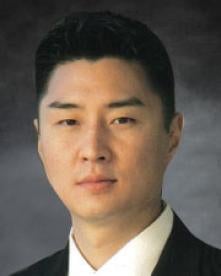The U.S. Court of Appeals for the Federal Circuit vacated and remanded a district court’s stipulated judgment of non-infringement, entered following Markman, after finding that the district court improperly limited claim terms by departing from the plain and ordinary meaning rule. Thorner v. Sony Computer Entertainment, Case No. 11-1114 (Fed. Cir., Feb. 1, 2012) (Moore, J.).
The patent-at-issue generally relates to vibrating video game controller technology. The Federal Circuit reviewed the construction of two claim phrases: “flexible pad” and “attached to said pad.”
The district court determined that “attached to said pad” meant affixed to only the outside of the pad because the specification consistently used the term “attached” to indicate an external attachment, while consistently using the term “embedded” to indicate an internal attachment. Thorner appealed.
In reversing, the Federal Circuit explained that under Phillips (see IP Update, Vol. 8, No. 10), words of a claim are generally given their ordinary and customary meaning as understood by a person of ordinary skill in the art when the patentee neither acts as his own lexicographer and clearly sets out an intent to redefine a term, nor clearly disavows the full scope of the claim either in the specification or during prosecution.
Here, with reference to the term “attached,” the Court noted that simply because the patent referring to two terms as alternatives or disclosed embodiments that all use the term the same way is not sufficient to redefine a claim term. Further, to constitute disclaimer, there must be a clear and unmistakable disclaimer. In this instance, the Court concluded that the patentee’s consistent use of the term “attached” did not amount to either the lexicography exception or the disavowal exception and that the district court therefore deviated from the plain and ordinary meaning of the term “attached to said pad,” which can encompass either an internal or external attachment.
Next, the Federal Court reviewed the district court’s decision that the term “flexible” meant “capable of being noticeably flexed with ease.” The patent owner asserted that the term “flexible” simply meant “capable of being flexed.” The patentee argued that the specification states only that the “flexible pad” must be a “semi-rigid” structure and no requirement that it must be “noticeably flexed with ease.” The Court agreed and again concluded that the district court improperly limited the term “flexible pad.” Further, the Federal Circuit noted that the district court had analyzed the degree of rigidity or the degree of flexibility that would amount to a “semi-rigid” structure. However, such an investigation is only properly a part of the infringement analysis, not claim construction.
Practice Note: After Markman, if a party stipulates to non-infringement based on contested claim terms, it is not precluded from also appealing the construction for additional claim terms not identified within the scope of the stipulation. For example, in Thorner, the stipulation included only the disputed phrase “attached to said pad.” Sony argued that claim construction issues that are not implicated by the district court’s judgment cannot be reviewed on appeal, citing Mass. Inst. of Tech. v. Abrams Software (FC 2006) (see IP Update, Vol. 9, No. 5). However, the Federal Circuit disagreed and exercised its discretion in deciding whether the claim phrase “flexible pad” was properly construed—even when that phrase was not implicated by the district court’s judgment. The Federal Circuit reasoned “it would waste judicial resources to refuse to decide this issue on appeal.”



 i
i


